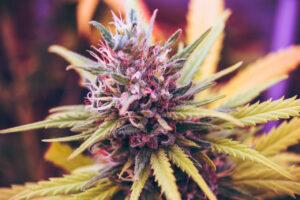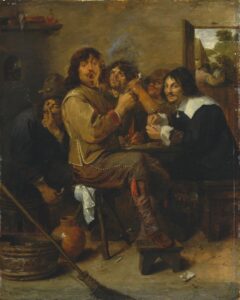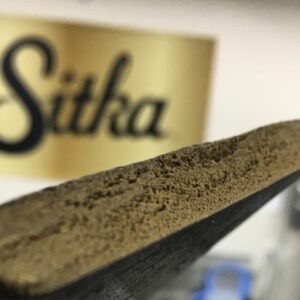INTRODUCTION
Budtenders are an integral part of the cannabis community, the glue that holds it all together, introducing the public to the different characteristics and virtues of the plant. When cross training, they enhance one another’s knowledge base, and through personal use and study learn the full spectrum of cannabis effects. We hold budtenders in high esteem. They are repositories of valuable information and the face of the industry.
BACKGROUND
Budtender is a portmanteau, the blending of two words, bud and bartender (much like smog is a portmanteau of smoke and fog). The word budtender dates back to 1997 when cannabis was first legalized in the USA: it was in California following passage of the Compassionate Use Act. Back then knowledge was gathered from farmers, extraction technicians, and edible chef; today, also from social media and industry blogs, all to develop a deepening appreciation for strains, medical uses, taste, smell, effect, and differentiation among products.
BRAND EDUCATION
It is the responsibility of brands (like Sitka Hash House) to educate budtenders on an ongoing basis. Evermore vibrant R & D coupled with the cannabis plant’s inherent complexity – impacts from 400+ cannabinoids! – makes for lots of learning opportunities. Personal connections between budtenders and customers are a significant building block and makes up a huge part of positive energy in every retailer/dispensary. Budtenders provide a key element for fostering customer satisfaction and repeat business. The best bring a passion for the cannabis plant and products and share their enthusiasm. Several states designated budtenders “essential workers.” We all crave the human trust and connection that budtenders deliver.
KNOWING DIFFERENCES
At its most basic level, one hears cannabis is either “sativa” or “indica”- the two main types that exist. Read Heart of Dankness by Mark Haskell Smith, subtitled, “Underground Botanists, Outlaw Farmers, and the Race for the Cannabis Cup” to dive deeper. Quoting from page 46: “Botanically speaking, Cannabis is the genus of the family Cannabaceae, and the plant contains three distinct subspecies: Cannabis sativa, Cannabis indica, and Cannabis ruderalis. Each of the plants has unique traits: The indica is low and bushy and indigenous to the mountainous regions of India and Iran. It is a robust plant and has been naturalized in such diverse parts of the world as Europe, North America, and Brazil. Cannabis sativa tends to be long and rangy, preferring hot, tropical zones, like Africa and Southeast Asia. Cannabis ruderalis is the red-headed stepchild of the group. Hardy and quick flowering, this low-growing plant has such modest levels of THC, the active ingredient in cannabis, that it hasn’t been, historically, used for medicinal or recreational purposes.” To oversimplify, the effects of indica tend to relax the body and sativa tend to stimulate the mind. A good sativa balances perfect mood elevation with minimum impairment: precision coupled with laughs. A good indica will give you a peaceful easy feeling.
HASHUCATION
Hash derives from the tiny resin-laden hairs that go by the botanical name of “trichomes”, sometimes referred to as “diamonds” or “crystals” because they are clear and somewhat shiny. These are parts of the plant that protect it from the sun. Trichomes are almost pure THC, the active ingredient in cannabis. Though there is great variation from one strain to another, certain outdoor plants tend to produce more trichomes in conditions with warmer daytime temperatures and colder ones at night. Higher altitudes help temperature-wise and also because in the mountains there is less oxygen and more CO2, which is good for the plants. Higher amounts of UV rays at higher heights also cause more crystals to be produced since the more intense sun stimulates the plant to work harder to protect her mother.
Typically, indoor plants have denser nuggets of buds frosted with increased levels of trichomes/THC since they’re carefully bred to do so. Knowing better how plants respond to light, light frequencies, LED lighting, their signal transduction pathways, polymerase chain reaction for DNA amplification, is leading to more scientific cultivation. Curing techniques are also growing more sophisticated. Farmers are finding a delicate balance between temperature, humidity, timing (giving harvested buds a few days to dry allows them to metabolize the chlorophyll in their cells, reducing harshness), and air to make better smoking products.
The Sitka Classic Line in Washington and California provide budtenders with an opportunity to try, taste, and feel the wondrous effects of traditional dry sift hashish, helping budtenders figure out how hash in all its incarnations fits within the larger cannabis picture.
CONCLUSION
It’s said that 7 prongs of the cannabis leaf represent the plant’s 7 powers: utility, sexuality, medicine, love, poetry, vision, and spirit. Budtenders assist consumers to parse through many different choices to find what works best to actualize the power of the plant to achieve the experience or set of experiences and sensations that each one is seeking.



